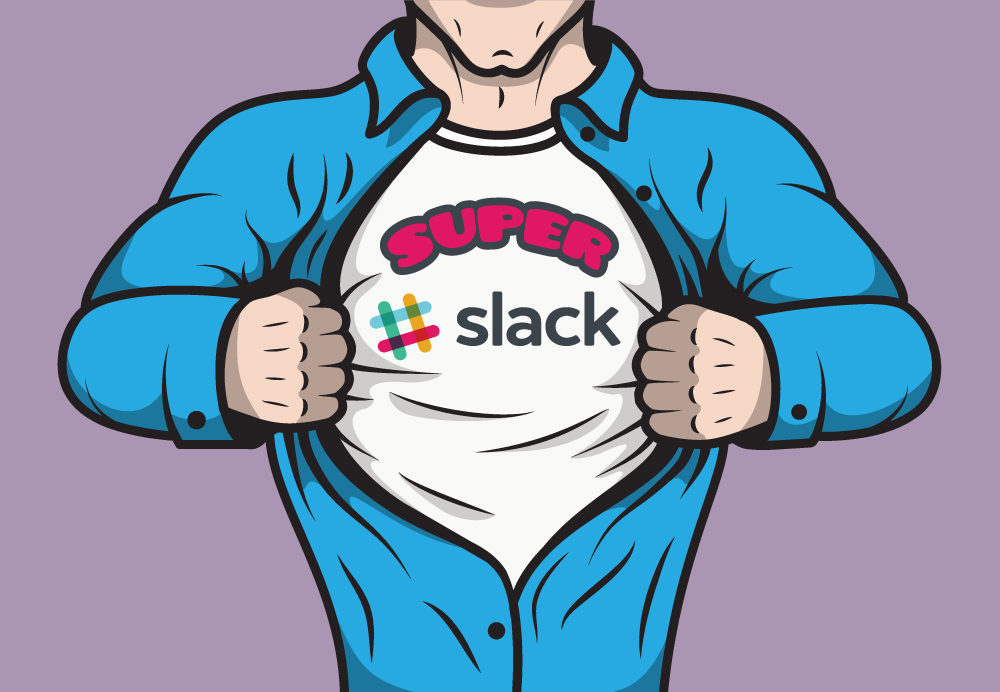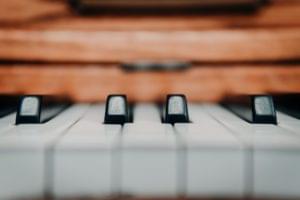How to Use Slack for Business: 6 Use Cases
Key Takeaways
- Slack is a versatile tool that can be used for a wide range of business functions, from project management to customer support, sales and marketing, HR and recruitment, education and training, event planning, and finance and accounting. Companies such as Crispy Mountain, DigitalOcean, eFounders, Slack, OneSpaceMedia, and Quartz have found innovative ways to use Slack to enhance their businesses.
- Companies can use Slack to enhance transparency with clients, streamline communication and collaboration, manage internal recognition systems, and make conversations more public for maximum productivity and transparency. It can also be used to preview files or pages without opening them, reduce unnecessary email chains, and create custom commands.
- Slack’s usefulness is only limited by a company’s creativity. It can be integrated with many project management tools like Trello, Asana, and Jira, as well as with tools like Zendesk or Intercom for customer support. It’s also an excellent tool for remote work, allowing team members to communicate and collaborate from anywhere in the world.

Airbnb. Vox Media. Spotify. Stripe. Eventbrite.
This could be a list of some of Silicon Valley’s darlings—but it’s not. It’s a very incomplete list of companies that use group chat platform Slack.
As of June, there were more than a million users logging in to Slack every day, making it by far the fastest-growing business app ever.
And of course, with the number and diversity of companies using Slack, not all communities are created equal. Check out these six innovative ways companies are using Slack to enhance, modernize and even reinvent their businesses.
1. Crispy Mountain
Crispy Mountain is a Germany-based development firm that switched to Slack from competitor HipChat in 2014.
A partner at Crispy Mountain, Christian Weyer, explains that Slack quickly became Black Mountain’s heartbeat.
“We post GitHub, Circle CI and Heroku messages to our project channels [and] job offers via IFTTT to the opportunities channel. Our sales team forwards important emails with clients, so the whole crew is up to speed.”
The agency even uses Slack integrations to receive notifications when a customer needs support and to control their office playlist.
But arguably the most unexpected way Black Mountain is using Slack? To be more transparent with its clients.
The company opened up its project channels to clients, inviting them to see everything the team had written about their product: bugs, progress, issues and so on.
Weyer says that even if clients don’t always understand the technical language, they can see that something’s happening with their project. The transparency also leads to greater trust. Overall, customer emails have dropped dramatically and satisfaction has gone way up.
2. DigitalOcean
This cloud infrastructure company (valued at $680 million) “<3 Slack,” according to its product design lead, Joel Califa. Slack has helped DigitalOcean’s team both bond and work more effectively.
The first result is clear in the wacky Slack channels Califa and his co-workers have started.
There’s a #seamless channel, which helps everyone organize their lunch and dinner orders, a #pingpong channel, which helps the team keep track of their ping pong power-ranking algorithm, and (we kid you not) a #catpix channel.
However, it’s not all fun and games at DigitalOcean. The company also relies on Slack for virtually all of its internal communication—Califa reports he almost never gets an email anymore.
A GitHub integration keeps everyone informed of what code commits and merges have been made (translation: what the development team is up to), while a Twitter integration informs the team any time there’s a @DigitalOcean mention (so they can stay engaged with their community) and a Dribble integration gives the product designers a never-ending stream of inspiration.
3. eFounders
eFounders is a start-up studio, which means it has one core team working with a rotating list of early-stage companies.
To streamline communication and collaboration, eFounders creates three core channels for each start-up in its network.
The first channel is for daily tasks, updates, and conversations; the second is for tech’s product discussions; and the third is a public space where anyone from the start-up can reach out to eFounders, and vice versa.
There are also ad hoc channels for temporary projects and permanent ones for each start-up’s departments.
But the coolest way eFounders is using Slack is to manage its internal recognition system.
“Since most our Network is spread out throughout the world, we’ve built a virtual currency to replace “thank yous” with our own money: the Briqs,” explains creative partner Didier Forest.
Using the Slack command “/give” enables eFounder community members to award each other briqs, which can then be used to purchase things in the eFounder shop.
4. Slack
Of course, Slack uses Slack. (Now that’s a good example of eating your own dog food.)
According to Slack founder Stewart Butterfield, he and his employees use the platform “all day, every day.”
They’ve discovered for maximum productivity and transparency, conversations should happen in the most public venue possible. For example, if given the choice between asking a question in a direct message to a team member, in a private channel, or in a company-wide channel, most Slack employees will default to the last option.
“There’s a lot of value sometimes to ask a question and get the answer in the biggest public forum that it could happen in,” Stewart told Fast Company.
Not only does this give everyone the chance to help, but since Slack archives every conversation, someone with the same problem in the future can easily search for the answer.
To stop conversations from becoming unmanageable, the company carves off new channels for discussions that become really popular. Benefits became a hot topic in the Onboarding channel, so it ended up getting its own feed.
5. OneSpaceMedia
Like many of the companies on this list, OneSpaceMedia takes full advantage of Slack’s integration options and has tied in almost all of its developers’ activities with the program.
Yet this digital creative agency is also doing a couple things with Slack we haven’t seen before. First, since Slack allows you to preview a file or page without actually opening it, OneSpaceMedia’s designer team uses the platform to review and iterate on designs without ever stepping away from their computers.
The company has also reduced a lot of unnecessary email chains. It’s established an #office channel, in which employees can request office supplies, an #attendance channel, where people post if they won’t be at their desks, and a #social channel, where people submit industry news, cool articles, and other “best of the web” links.
Finally, OneSpaceMedia has some awesome custom commands, including commands for finding a word definition, linking to a subreddit, and even finding a track on SoundCloud.
6. Quartz
As the global business brand of Atlantic Media, we’re not surprised that Quartz has developed a unique way to make Slack work for its newsroom.
Since the average story has a fairly structured workflow (concept, draft, editing, published), Quart has set up channels for each step of the process.
That way, it’s easy for everyone to see the status of an article. And it also ensures more than one person doesn’t try to do the same task—a common issue in media.
To streamline things even more, Quart relies on—wait for it—emojis.
When editors claim a story, they use a specific emoji reaction—the fist, to show that they’re ‘grabbing’ the edit,” executive editor Zach Seward told Neiman Lab. “It quickly became clear that this was really useful… Emoji reactions have helped add some structure to the workflow.”
These six Slack use cases prove that the only limit on its usefulness is how creative your company is. Borrow some of these ideas—then develop your own!
Frequently Asked Questions (FAQs) about Slack Use Cases
How can Slack be used for project management?
Slack is an excellent tool for project management. It allows team members to communicate in real-time, share files, and collaborate on tasks. You can create different channels for different projects, making it easy to keep track of conversations and tasks related to each project. Additionally, Slack integrates with many project management tools like Trello, Asana, and Jira, allowing you to manage tasks and deadlines directly within Slack.
Can Slack be used for customer support?
Yes, Slack can be used for customer support. It can be integrated with tools like Zendesk or Intercom to manage customer queries. You can also create a dedicated channel for customer support where team members can collaborate to resolve customer issues.
How can Slack improve team collaboration?
Slack improves team collaboration by providing a platform where team members can communicate in real-time, share files, and work together on tasks. It also allows for the creation of different channels for different teams or projects, making it easy to keep track of relevant conversations.
Can Slack be used for remote work?
Absolutely, Slack is an excellent tool for remote work. It allows team members to communicate and collaborate from anywhere in the world. It also integrates with many other tools that remote teams use, like Google Drive for file sharing, Zoom for video conferencing, and Asana for task management.
How can Slack be used for software development?
Slack can be used in software development in several ways. Developers can create channels for different projects or features, making it easy to keep track of relevant conversations. They can also integrate Slack with tools like GitHub or Bitbucket to get notifications about code commits, pull requests, and more.
Can Slack be used for sales and marketing?
Yes, Slack can be used for sales and marketing. Sales teams can use Slack to communicate with prospects and customers, share sales materials, and collaborate on sales strategies. Marketing teams can use Slack to collaborate on marketing campaigns, share marketing materials, and get feedback from other team members.
How can Slack be used for HR and recruitment?
Slack can be used for HR and recruitment by creating channels for different job roles or recruitment stages. HR teams can also integrate Slack with tools like Greenhouse or Workable to manage the recruitment process.
Can Slack be used for education and training?
Yes, Slack can be used for education and training. Educators can create channels for different classes or subjects, share educational materials, and communicate with students. It can also be used for internal training within organizations.
How can Slack be used for event planning?
Slack can be used for event planning by creating channels for different events, sharing event details, and collaborating on event tasks. It can also be integrated with tools like Google Calendar to manage event schedules.
Can Slack be used for finance and accounting?
Yes, Slack can be used for finance and accounting. Finance teams can use Slack to communicate about financial reports, share financial data, and collaborate on financial strategies. It can also be integrated with tools like QuickBooks or Xero to manage financial tasks.
Aja Frost is a writer, tech/design geek, and podcast addict. Check out her site or say hi on Twitter.
Published in
·Business·Entrepreneur·Entrepreneurship·Entrepreneurship·Freelancing·Legal·Management·Marketing·Productivity·Revenue·February 28, 2017
Published in
·JavaScript·Patterns & Practices·Performance & Scaling·PHP·Programming·Ruby·Web·October 10, 2014



